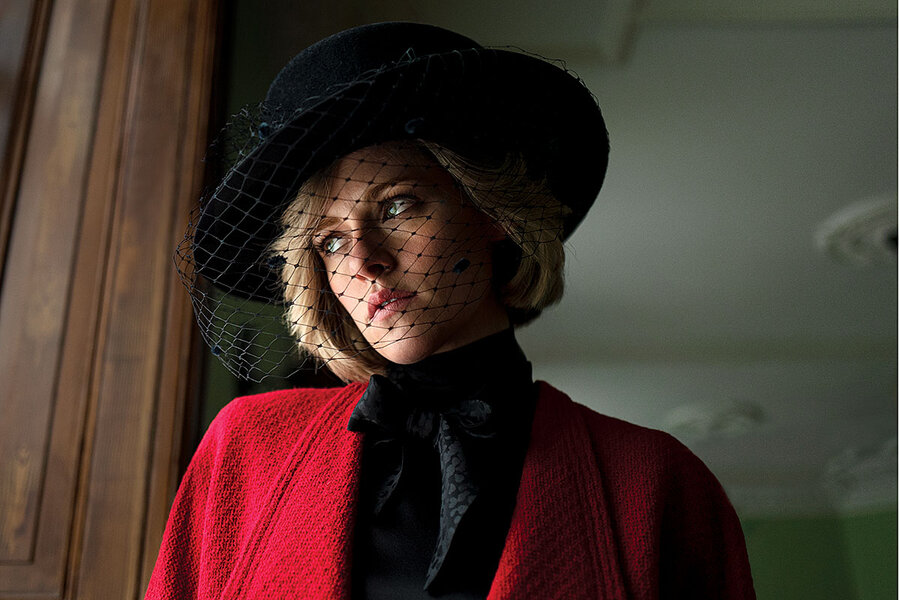What more is there to say about Princess Diana? ‘Spencer’ offers a fable.
Loading...
“Spencer,” starring Kristen Stewart as Princess Diana, is the latest in a seemingly unending stream of movies and TV and Broadway shows about the blighted royal. Coming after, most recently, “Diana: The Musical,” “The Crown,” and CNN’s six-part docuseries “Diana,” is there anything left to explore? More to the point, is it morally justifiable to keep digging away at her life?
In an attempt to quell these qualms and demonstrate that their movie is less biopic than fantasia, Chilean director Pablo Larraín (who also helmed 2016’s “Jackie”) and screenwriter Steven Knight open the film with a title: “A Fable From a True Tragedy.” But their method here is not simply fanciful; it’s intended to impart a more profound view of Diana than a mere biographical rendering ever could.
The risk here is that, in employing her life as a fable, with made-up incidents and dream sequences, the result will end up resembling high-art exploitation. And parts of “Spencer” do indeed veer dangerously close to that terrain. But I never felt that the filmmakers were posthumously trying to cash in on Diana’s celebrity. The fable-making, at least, is done with genuine commitment. Most of all, Stewart’s fierce performance roots it all in reality.
Why We Wrote This
Does the latest movie to focus on Princess Diana help people better understand her? Film critic Peter Rainer says “Spencer” intends to impart a more profound view of the famous royal than a biographical rendering ever could.
Stewart has made a lot of middling movies, but it should come as no surprise to anyone who has seen her in “Clouds of Sils Maria” or “Personal Shopper” that she can be an extraordinarily subtle and resourceful actor. “Spencer” takes place in 1991 over three days, beginning on Christmas Eve, at Queen Elizabeth’s palatial Sandringham estate in Norfolk – and Diana is in almost every scene. She is constantly surrounded, along with her two children, William (Jack Nielen) and Harry (Freddie Spry), by an assortment of royals, servants, dressers, and chefs. (Timothy Spall and Sally Hawkins are standout performers here.) Nevertheless, Diana is isolated by the protocols of her station. She seems most alone when she is with other people. Her flintiness is her way of armoring herself against their incursions.
To the film’s credit, Diana’s gilded-prison desperation is not displayed as a martyrdom for which she is blameless. This royal can be a royal pain, and Stewart doesn’t flinch from the more unsavory aspects of Diana’s woe. The Princess of Wales grew up in an estate, now condemned, a few fields over from the queen’s, and when she ditches a Christmas dinner to explore its ramshackle remains, you may find yourself commiserating less with her than with the stood-up royals. (It doesn’t help that Larraín films her exploration in a jangly style that breaks rather than enhances the movie’s mellifluous mood.)
But despite Diana’s hair-trigger heedlessness, the movie finally imparts to her a kind of heroism. It’s the valor of a mother who didn’t want her sons to become like those she abhorred. The most moving scenes in “Spencer” are those in which she tries to protect them. The film’s fairy-tale ending is thus doubly entrancing – and saddening.
Peter Rainer is the Monitor’s film critic. “Spencer” is rated R for some language.







